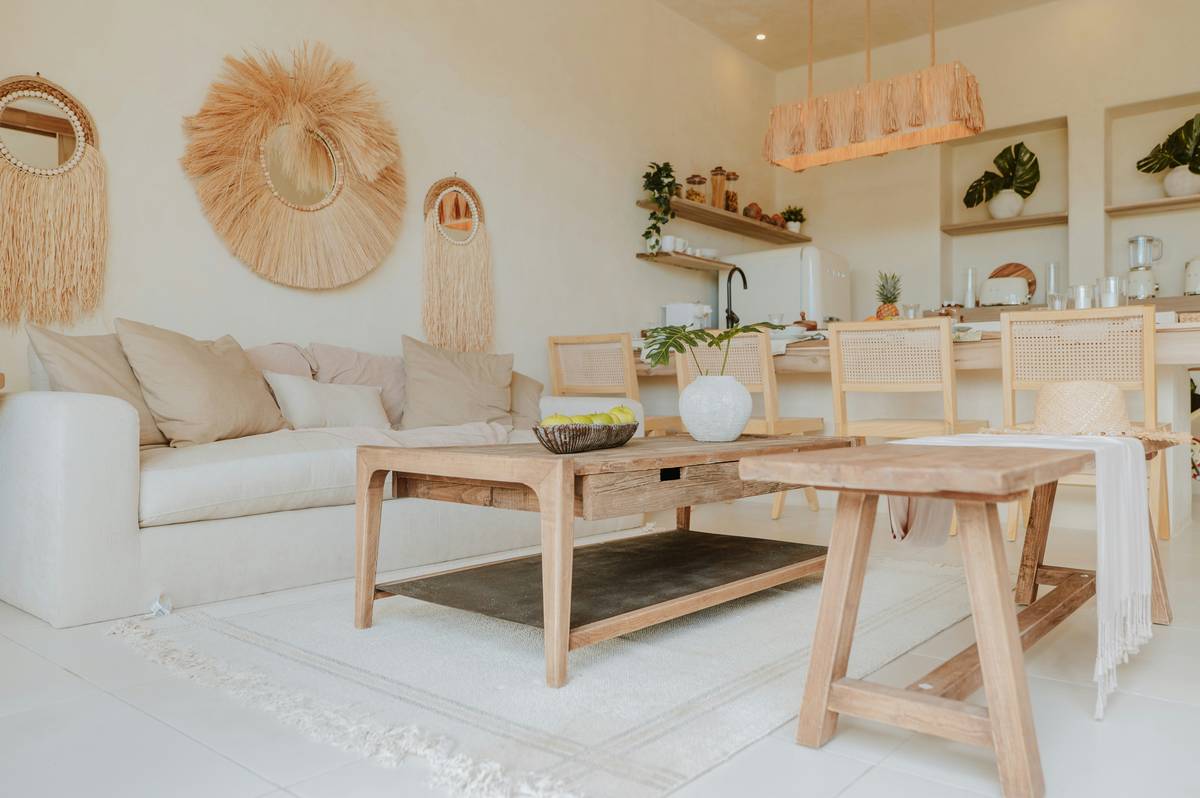Ever stared at your living room, wondering how much of it will end up in a landfill someday? Yeah, me too. It’s shocking to think that over 80% of furniture ends up in landfills globally, contributing to the ever-growing waste crisis. But what if I told you there’s a smarter, greener way to design your space—using zero waste furniture powered by smart home technology?
In this guide, we’ll dive into the concept of smart furniture, explore why zero waste furniture is a game-changer for eco-conscious homeowners, and walk you through actionable steps to adopt this trend without losing your sanity (or your budget). You’ll discover how tech meets sustainability in surprising ways—oh, and prepare yourself for some brutally honest rants about overpriced “eco-friendly” options.
We’ll cover:
- Why traditional furniture harms the planet—and your wallet.
- Actionable advice on choosing and integrating zero waste furniture into your home.
- Tips from real-life success stories (and a glaring failure).
- Frequently asked questions about sustainable smart furniture.
Table of Contents
- Key Takeaways
- Why Traditional Furniture is Bad News
- Step-by-Step Guide to Choosing Zero Waste Furniture
- Tips to Maximize Sustainability with Smart Furniture
- Real-Life Success Stories & Lessons Learned
- FAQs About Zero Waste Furniture
Key Takeaways
- Zero waste furniture minimizes environmental impact while embracing advanced technology.
- Smart furniture can adapt to different uses, reducing clutter and waste.
- Buying secondhand or modular pieces helps reduce reliance on mass-produced items.
- Not all “green” products live up to their claims—always do your research!
Why Traditional Furniture is Bad News

Let me set the scene: picture your favorite coffee table—it’s probably made of cheap particleboard, doomed to crumble within years. That scenario isn’t unique; most furniture today is designed for obsolescence rather than longevity. Combine that with toxic chemicals in finishes and synthetic materials, and voilà—you’ve got an environmental disaster waiting to happen.
I once bought a sofa marketed as “eco-friendly.” Spoiler alert: it wasn’t. Six months later, it fell apart faster than my trust in greenwashing companies. The lesson? Don’t fall for buzzwords like “recycled” unless they’re backed by actual certifications.
“Optimist You:” “There must be a better solution!”
“Grumpy Me:” “Yeah, but it won’t magically appear under your Christmas tree.”
Step-by-Step Guide to Choosing Zero Waste Furniture
Step 1: Identify Your Needs
Before diving headfirst into shopping, ask yourself: Do I need this piece, or am I just impulse-buying because TikTok said so? Focus on functionality and avoid buying duplicates.
Step 2: Research Reputable Brands
Prioritize brands committed to transparency. Look for certifications like FSC (Forest Stewardship Council) or Cradle to Cradle, which ensure responsible sourcing and production practices.
Step 3: Consider Modular Designs
Modular zero waste furniture—think desks that transform into dining tables—is chef’s kiss for saving space and resources. These adaptable pieces grow with your needs, cutting down future purchases.
Step 4: Explore Secondhand Options
Platforms like Facebook Marketplace or Craigslist are treasure troves for pre-loved furniture. With minimal effort, you can give old pieces new life—just add paint or reupholstery.
Tips to Maximize Sustainability with Smart Furniture

1. Invest in Multi-Functional Pieces
A bed frame with built-in storage? A couch that folds into a guest bed? These innovations keep your home organized while minimizing clutter.
2. Choose Energy-Efficient Features
Pick furniture integrated with IoT capabilities, such as desks with wireless charging pads or chairs equipped with posture sensors—tech that adds value without wasting energy.
3. Avoid Overly Trendy Styles
Here’s a brutal truth: those neon pink velvet ottomans might feel trendy now, but they’re landfill-bound when trends shift. Go timeless instead.
4. Terrible Tip Alert!
Don’t assume every bamboo product is eco-friendly. Bamboo grows quickly—but if manufacturers use harsh chemicals during processing, it’s not much greener than plastic.
Real-Life Success Stories & Lessons Learned
Lisa S., a Brooklyn-based interior designer, shares her story: “I swapped out bulky bookshelves for wall-mounted shelving units made entirely from reclaimed wood. Not only did it save space, but clients loved the aesthetic too!”
On the flip side, Tom R.’s attempt at DIY zero waste furniture resulted in a wobbly desk held together by duct tape. Moral of the story? Know your limits before going full MacGyver.
FAQs About Zero Waste Furniture
Q: Is zero waste furniture expensive?
A: Not necessarily. While high-end brands may cost more upfront, buying secondhand or DIY projects often offsets costs significantly.
Q: Can smart furniture really help reduce waste?
A: Absolutely! Multi-functional designs mean fewer pieces overall, lowering consumption and eventual disposal rates.
Q: How do I verify a company’s sustainability claims?
A: Check for third-party certifications, read reviews, and look into their supply chain processes.
Conclusion
Incorporating zero waste furniture into your smart home setup isn’t just good for the planet—it’s great for your peace of mind. By embracing multi-functional designs, investing in durability, and supporting ethical brands, you can create a space that aligns with both tech innovation and ecological responsibility.
So go ahead, turn your living room into a futuristic haven of sustainability. And remember—even small changes make big impacts. Now excuse me while I rant about people using single-use water bottles…
Like Tetris blocks,
Your furniture fits snug;
No landfill regrets.


